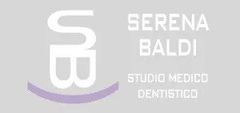Dental Practice AND GNATOLOGY IN FLORENCE
GNATOLOGY - FLORENCE
Gnathology procedures
Gnathology is a branch of dentistry that deals with the physiology and diseases of the temporomandibular joint and how it works with dental occlusion.
The temporomandibular joint is positioned bilaterally and joins the mandibular bone with the temporal bone. More specifically, it connects the mandibular condyle with the glenoid fossa of the temporal bone, which allows the jaw to move. We can find a cartilaginous disc (meniscus) located between these two heads of the bone. There is a close relationship between dental occlusion, the chewing muscles and temporomandibular joints, and the dentist's task (an expert in gnathology) is to study and restore the right balance between these elements, curing any type of disorder.
SKULL-CERVICAL-MANDIBULAR DISORDERS
Craniocervical mandibular disorders, TMD, are a set of disorders that affect the temporomandibular joint and the head and neck muscles.
The patient will generally see an expert in gnathology when there are difficulties with moving the mouth, when the range of motion for opening and closing the mouth is limited, or when the jaw is "blocked". Often the patient reports joint "clicks", annoying noises that are heard when opening the mouth and chewing, or which come to the doctor's attention due to pain (trigeminal, cervical), a persistent headache, but also due to dizziness, tinnitus as well as postural alterations. As the muscles needed for chewing and dental occlusion are the first links within the postural chain, any teeth malocclusions can generate painful-dysfunctional symptoms that can be attributed to the head-neck area.
The task of this expert is also to help the patient eliminate the possible causes of these abnormal functions. Teeth grinding (bruxism) and teeth clenching are the most common of these abnormal functions.
Teeth grinding
Grinding your teeth together during your sleep is a habit that almost exclusively happens at night and is an involuntary action. Patients may realise they are doing this because this kind of abnormal action will eventually form wear facets on the teeth over time, and when the patient wakes up, they often notice that their chewing muscles are aching, which can then affect the neck and shoulder muscles, as well as cause a headache.
Teeth Clenching
Unlike teeth grinding, teeth clenching often occurs during the day, when the patient is engaged in stressful activities, which may or may not be work-related (e.g. driving a car). In this case, stress is considered to be the cause and the specialised dentist will have the task of guiding the patient through "behavioural" therapy.
Mouth guard
If there is too much free space in the oral cavity, we can help bring the patient's jaw and skull back in line by using a special plate known as a mouth guard. This helps move the jaw into an unstrained position and makes sure the jaw stays there before stabilising the new occlusion position which happens once the symptoms have subsided. The mouth guard is an aid that sits on top of the lower teeth and recreates a normal tooth structure. This will help find and maintain the way the teeth come together to bring about a better muscle balance.
Call to make an appointment
Teeth Grinding
Grinding your teeth together during your sleep is a habit that almost exclusively happens at night and is an involuntary action. Patients may realise they are doing this because this kind of abnormal action will eventually form wear facets on the teeth over time, and when the patient wakes up, they often notice that their chewing muscles are aching, which can then affect the neck and shoulder muscles, as well as cause a headache.
Contact our dental surgery to make an appointment








